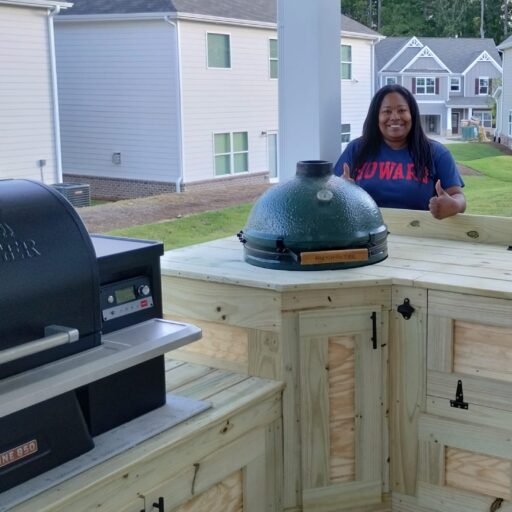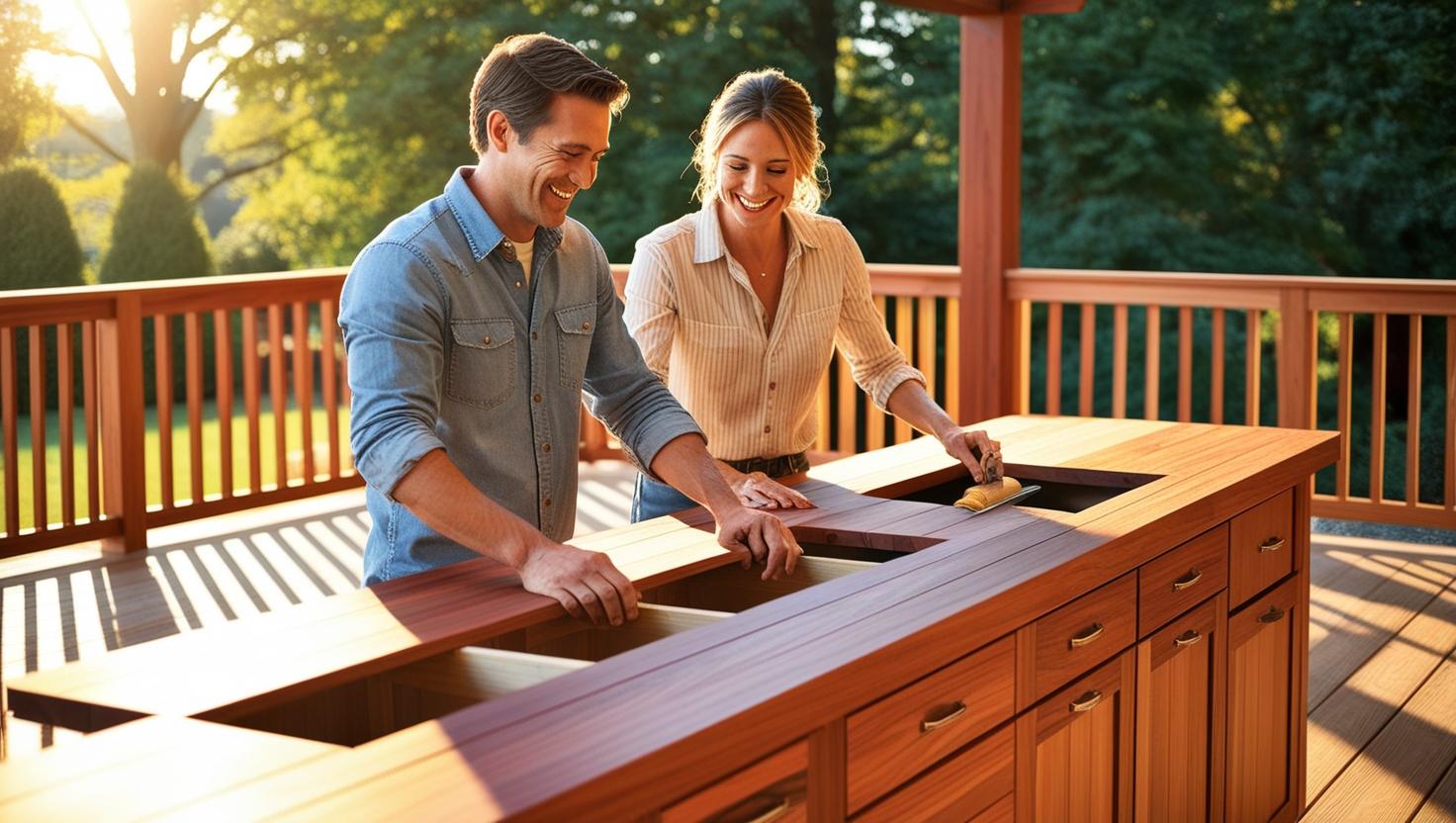Creating an outdoor kitchen is one of the best ways to enhance your home’s functionality and bring the joy of cooking to the great outdoors. Whether you’re an avid griller, a seasoned chef, or someone who simply loves entertaining, an outdoor kitchen provides the perfect space for preparing meals while enjoying nature. However, building an outdoor kitchen involves careful planning and consideration. Here’s a brief guide to help you get started on building your dream outdoor kitchen.
1. Determine Your Budget and Space
Before diving into the design process, it’s essential to set a realistic budget and evaluate the space available. Outdoor kitchens can range from simple setups with a grill and counter space to fully equipped culinary havens with sinks, refrigerators, and even pizza ovens. By knowing how much you’re willing to spend and the area you have to work with, you can design a kitchen that fits both your needs and your space.
Things to consider:
- Your overall budget for materials and appliances.
- Available space for installation, considering traffic flow and seating areas.
- Future upgrades or expansions you may want to add later.
2. Select Key Appliances
The core of any outdoor kitchen is the appliances that will be used most often. The main appliance will typically be the grill, but you should consider additional features like a refrigerator, sink, side burners, or even a pizza oven, depending on your cooking style.
Popular appliances to include:
- Grills: Choose between gas, charcoal, or wood pellet grills based on your grilling preferences.
- Side Burners: Perfect for cooking sauces, sides, or stir-frying while grilling.
- Refrigerators: Keep drinks and fresh ingredients close by, so you don’t need to run back inside.
- Pizza Oven or Smoker: If you enjoy experimenting with different cooking methods, a wood-fired pizza oven or smoker can add great flavor to your meals.
Consider durability and weather resistance when selecting appliances, as outdoor kitchens are exposed to the elements.
3. Design with Functionality and Flow in Mind
When designing your outdoor kitchen, functionality is key. Think about how you will move between the different cooking, prep, and eating areas. The kitchen should have a logical flow, so you aren’t constantly running back and forth between the grill and the counter. A work triangle—placing the grill, prep area, and sink in close proximity—is a common design concept that makes cooking more efficient.
Design tips:
- Prep Areas: Include plenty of counter space for prepping ingredients.
- Seating: Plan for seating options like bar stools or a dining table to make the space inviting for guests.
- Storage: Don’t forget storage for utensils, spices, and other tools that will help you stay organized.
- Shade and Shelter: Incorporate a pergola, umbrella, or roof to protect you from the elements during cooking.
4. Choose Durable Materials
Since your outdoor kitchen will be exposed to the elements, it’s important to choose materials that are durable and weather-resistant. From countertops to cabinetry, selecting the right materials ensures your outdoor kitchen stands the test of time.
Recommended materials:
- Countertops: Granite, quartz, or concrete are all excellent options for outdoor surfaces.
- Cabinets: Stainless steel or marine-grade plywood with weatherproof finishes provide durability and resistance to moisture.
- Flooring: Choose materials like outdoor tiles, pavers, or gravel that are easy to clean and resistant to wear and tear.
Ensure all materials used can withstand exposure to the sun, rain, and temperature changes without degrading over time.
5. Lighting and Power
Lighting and power are often overlooked, but they’re essential for a fully functional outdoor kitchen. Proper lighting is crucial for evening cooking, and power sources will be necessary for any electrical appliances or lighting.
Considerations:
- Task Lighting: Install focused lighting over cooking and prep areas to ensure visibility while working.
- Ambient Lighting: Create a welcoming atmosphere with soft, ambient lighting around seating and dining areas.
- Electrical Outlets: Ensure you have enough outlets for appliances, lights, and even small gadgets like blenders or electric smokers.
Consider working with a licensed electrician to ensure proper outdoor electrical installations, especially for waterproof lighting and appliances.
6. Integrate Landscaping and Style
Your outdoor kitchen should blend seamlessly with the rest of your outdoor space. Think about how the kitchen will integrate into your landscaping and overall design aesthetic. Whether you prefer a rustic, modern, or coastal look, the design of your kitchen can enhance your outdoor living space.
Design ideas:
- Use natural stone or brick for a rustic, earthy feel.
- Choose sleek, minimalistic finishes for a contemporary vibe.
- Add greenery or potted plants around the space for a touch of nature.
Consider how your outdoor kitchen fits into the overall layout of your backyard or patio, ensuring it complements the landscape design.
Conclusion: Enjoy the Outdoors with Your Custom Outdoor Kitchen
Building an outdoor kitchen is an exciting project that can elevate your home and cooking experience. By setting a budget, selecting the right appliances, designing with flow in mind, choosing durable materials, and integrating your kitchen into your landscape, you can create a space that brings both functionality and beauty to your outdoor living area. With careful planning, your outdoor kitchen will become a central hub for family meals, entertaining, and making lasting memories.


Leave a Reply
You must be logged in to post a comment.